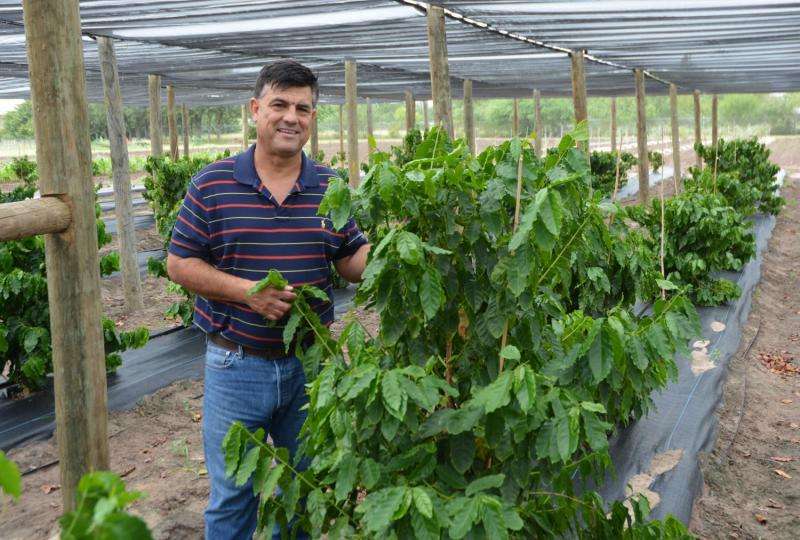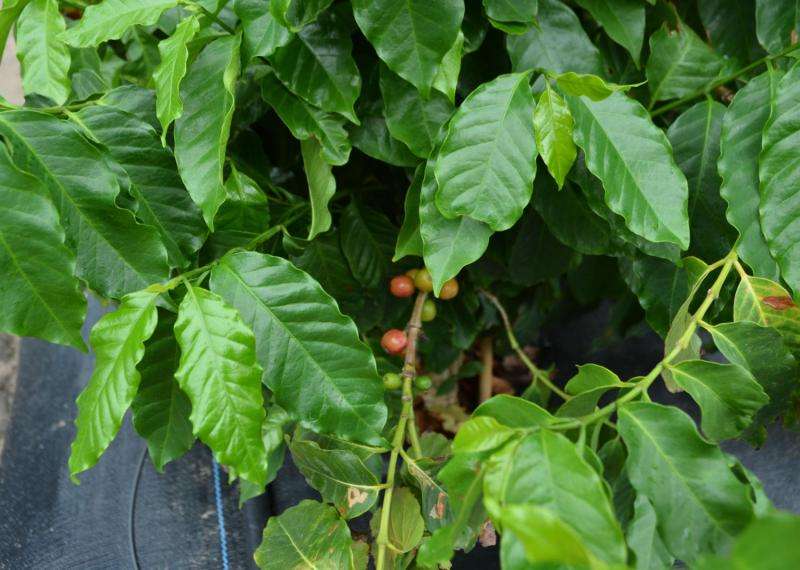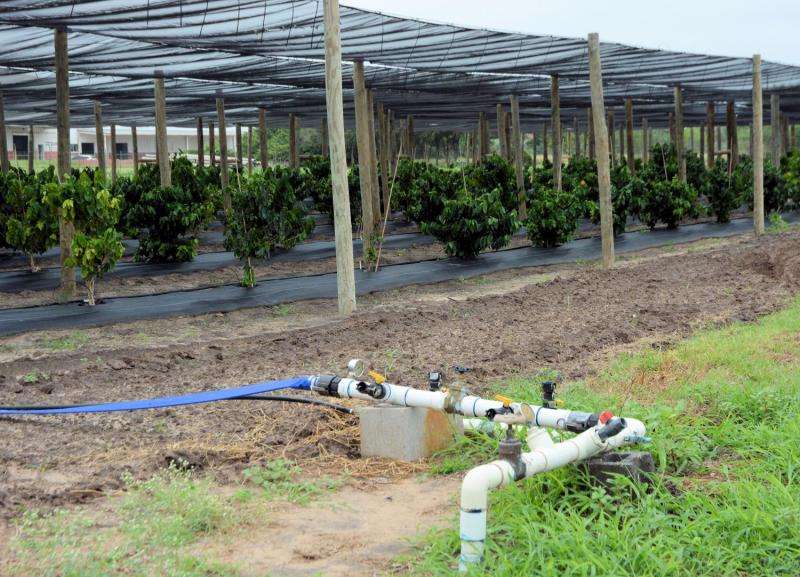Coffee farm thriving in the Rio Grande Valley

A South Texas scientist is amazed that coffee plants from all over the world are growing so well in the subtropical conditions of the Rio Grande Valley.
Just over a year ago, Dr. Juan Anciso, a Texas A&M AgriLife Extension Service fruit and vegetable specialist, planted 200 plants representing 40 coffee varieties from Central and South America and Africa.
The plants have flourished and are already producing an impressive amount of coffee beans, Anciso said.
"The goal of this experiment was not to determine whether coffee could be grown commercially in South Texas, but now I'm starting to wonder," he said.
Anciso doesn't envision fields of coffee displacing the longtime staples of citrus, cotton or sugarcane here, but he does think there's a chance local nurseries could sell coffee plants to homeowners some day.
"Who knows," he said. "People here in the Valley could one day grow coffee plants on their patios and brew their own coffee beans every once in awhile."
In August 2015, Anciso planted 200 small coffee plants under drip irrigation and shade cloth at the Texas A&M AgriLife Research and Extension Center at Weslaco. The plant material had been collected as part of a joint venture of the Texas A&M University System and the Borlaug Institute, part of Texas A&M AgriLife Research, in College Station.
The one-third acre coffee farm in Weslaco was designed to maintain germplasm and provide plant material for researchers combating a disease that's developed into the major issue for coffee growers throughout the world—coffee rust.
"Coffee rust is an airborne fungus that can be devastating in those countries that commercially produce coffee beans," Anciso said. "Some varieties are very susceptible and can result in growers abandoning entire coffee plantations."
Besides eliminating a profitable industry for many third-world, coffee-producing countries, there is also a fear that coffee prices could rise as a result of the disease.
"The reason for this coffee farm is to screen for resistance to coffee rust," Anciso said. "Texas A&M graduate students occasionally come to Weslaco from College Station to collect plant material to research at the DNA level and identify genetic markers of those susceptible and resistant varieties to eventually make recommendations to coffee-growing countries."
Anciso said maintaining the plants under greenhouse conditions at College Station would be too costly.

"It's cheaper and easier to grow them in the field," he said. "So researchers at Texas A&M and the Borlaug Institute decided Weslaco would be a good place to grow them. We've been using all the cultural practices necessary, including irrigation and fertilization, and every eight weeks we apply a foliar fungicide spray to keep coffee rust from developing here."
The last thing that's needed, Anciso said, is to develop a "coffee rust disaster" here.
Microorganisms are also used to provide the soil with beneficial bacteria that colonize on the roots, protecting the plant against disease and increasing the amount of root hairs to help the plants take up nutrients.
"We tried to imitate as closely as we could the natural environment that coffee is normally grown in," Anciso said. "But coffee normally grows in cool conditions on rainy mountainsides with good drainage and soil with an acidic pH. Here, the Valley is flat and our soil tends to be alkaline, or have a basic pH."
Despite the Valley's many differences, the plants are doing well, and Anciso is obviously impressed.

He said he could find no evidence of coffee ever having been tested at the Texas A&M agricultural facility in Weslaco, which dates back to its opening in 1923.
"After several devastating freezes, there was an extensive study in the early 1970s of many different plants to determine if they could serve as good alternatives to crops grown commercially here, but I haven't found anything in the archives to show that coffee was tested."
Anciso said it's too early to say if coffee plants have a future in the Valley, "but maybe in a few years we can find some coffee varieties suitable to this area that nurseries could produce for homeowners to grow their own coffee beans."
More information: For more information on the Borlaug Institute, go to borlaug.tamu.edu
Provided by Texas A&M University


















